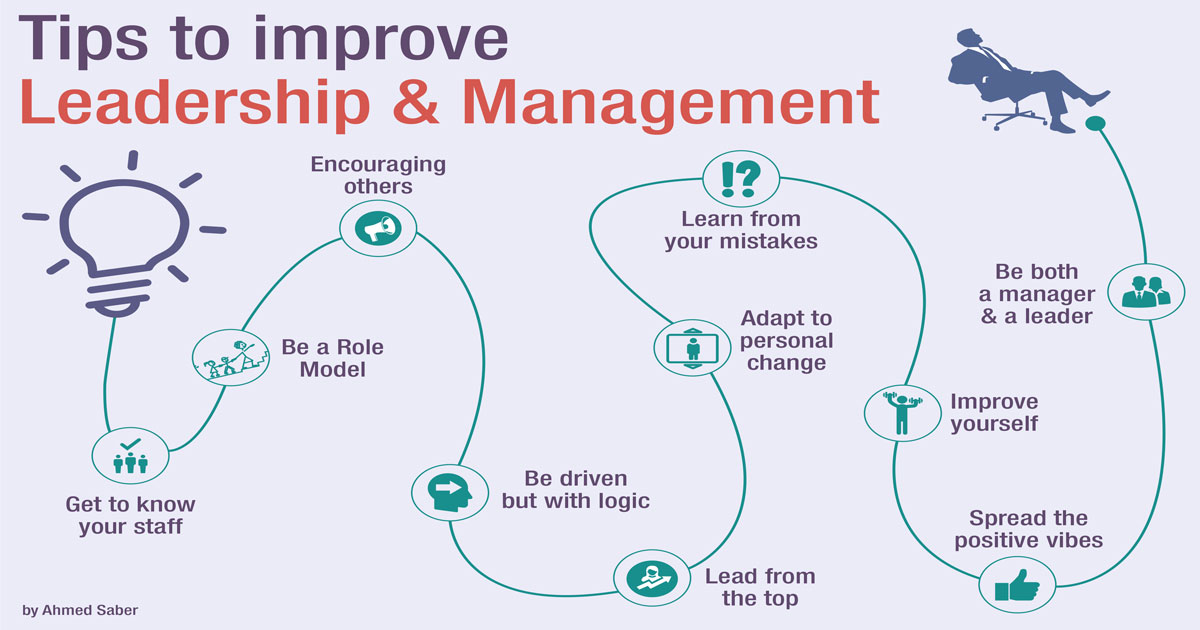By Nessma Ashraf
As we all know there is a complete difference between a manager and a leader. It is very often that these two terms get mixed together. The main difference between leaders and managers is that leaders have people follow them while managers have people who work for them.
A successful business owner needs to be both a strong leader and manager to get their team on board to follow them towards their vision of success. Leadership is about getting people to understand and believe in your vision and to work with you to achieve your goals. Bringing out the best in your people, it’s something all managers want to do, yet is something that’s it’s easier said than done.
Rest assured we got you the top 10 leadership and management tips according to Forbes and Harvard Business Review:
1-Get to know who your people are
If you want to bring out the best in your employees, you have to, at least to some extent, understand them. Gain a basic understanding of what interests them, what bothers them, what they care about, what motivates them. Is it money, respect, praise, or a bigger office? There are a multitude of possibilities. The better you know your people, the better chance you’ll have to pull the right managerial levers.
2- Lead by example:
Behave as you would want your employees to behave, but also understand that your role is different from that of your employees.
3- Your success depends on the success of others:
To succeed as a manager, you will need to shift your focus from “me” to “we.” Going forward, your success will no longer be measured by your individual contribution. Instead, you will be evaluated on your ability to create and maintain a highly engaged team that is willing to give it their all.
4- Ambitious but not unrealistic expectations:
Both in formal job objectives and informal day-today managerial expectations, you want to set targets that stretch your employees, but at the same time are attainable. Let them know you have high (but not unreasonable) standards, and at all times expect excellence. Competence breeds confidence, and successfully achieving ambitious goals motivates them to do it again
5- Tone at the top:
Lead in a way that makes it easy for others to want to follow. Setting the right example by your own business behavior; your own evenhandedness and ethics makes it easy for your employees to respect you. Nobody wants to follow somebody they don’t respect, yet they’re eager to follow those they do. It’s always surprised me how often management doesn’t play by the same rules they ask others to when setting a fine example costs nothing and only breeds productivity.
6- Shed your unnecessary “Need to be you”:
One of the worst habits a leader can have is excusing his behavior with claims like, “That’s just the way I am!” Stop clinging to bad behaviors because you believe they are essential to who you are. Instead of insisting that you can’t change, think about how these behaviors may be impeding the success of those around you. Don’t think of these behaviors as character traits, but as possibilities for improvement. You’ll be surprised how easily you can change when it helps you succeed.
7- Learn from the past:
Those who don’t learn from the past are doomed to repeat it. History, recent and otherwise, is filled with examples of successful business models and spectacular business failures. Think about what the people you admire do well, and consider what went wrong for those who end their careers mired in scandal or disgrace. Lessons can be found everywhere.
8- Never stop improving:
Great leaders, indeed, great people are constantly learning and always trying to improve themselves. There’s always something that you can work on or a new skill to master. Be sure to keep your mind open to new ideas and possibilities.
9- Keep a positive attitude:
You want to keep your team motivated towards the continued success of the company, and keep the energy levels up. Whether that means providing snacks, coffee, relationship advice, or even just an occasional beer in the office, remember that everyone on your team is a person. Keep the office mood a fine balance between productivity and playfulness.
10- Be both a manager and a leader:
And finally! In today’s tough economy, should leaders be dogged, analytic, and organised or should they be empathic, charismatic, and communicative? The answer is simple: They need all those traits. Rather than categorizing yourself as a certain type of leader, explore the nuances that a complex, fast-moving business environment requires. Leaders need to confidently deliver tough messages with analytics as evidence, but they also need to be sensitive to how people receive those messages. Most leadership traits are not an either/or choice, but rather complementary sides of effective management.


